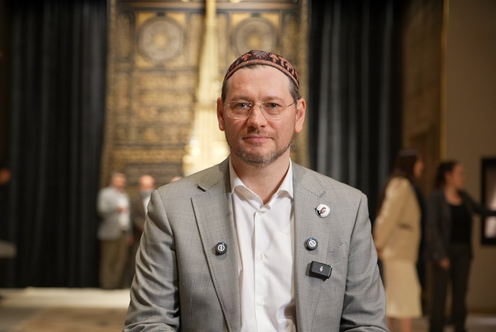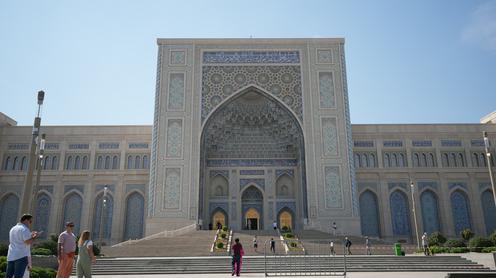At the Center for Islamic Civilization in Tashkent, the forum “Heritage of the Great Past — the Foundation of an Enlightened Future” was recently held, bringing together more than 200 specialists from over 20 countries. Participants of the forum were among the first to view the museum halls of the Center. One of the highlights of the museum is the kiswa, presented to Uzbekistan last summer by Saudi Arabia. The heart of the Center is the Hall of Qurans, home to the famous Quran of Uthman. The combination of spirituality and science in a single space — which is what the Center for Islamic Civilization represents — was praised by Damir Mukhetdinov, Deputy Chairman of the Spiritual Administration of Muslims of Russia (SAMR) and Rector of the Moscow Islamic Institute.
The kiswa is part of the covering of the Kaaba — a black silk cloth embroidered with gold thread, which drapes the walls of the Kaaba, the sacred stone structure in Mecca considered the physical center of Islam. The covering is replaced annually; the old one is cut into pieces and distributed to select individuals, officials, museums, and institutions. An installation of the kiswa and the keys to the Kaaba adorns the Hall of the First Renaissance, where Fergana’s correspondent met with Damir Vaisovich.
— How significant is it to have the kiswa at the Center for Islamic Civilization?
— This is truly a remarkable acquisition, a wonderful thought, a wonderful idea — that such an element of Muslim culture, tradition, ibadat (Islamic worship), an element of devotion, has found its place in the Center for Islamic Civilization.
Seeing the kiswa in person, up close, examining its details — in a way, this is like making a small “virtual” pilgrimage to the House of Allah: it awakens love for the sacred and motivates one to fulfill what is prescribed in the Holy Quran — that people have a duty to visit the House of Allah and enter this state of worship.
Our state begins with internal preparation: when you plan for such an event, set aside money, think about whether to go on vacation this year or to fulfill a religious obligation. Visiting such a place beforehand immerses and prepares you for the encounter with the House of Allah, with the Kaaba. The kiswa serves as a kind of “entrance portal”: through this “door,” one symbolically steps into the Kaaba, the House of Allah, and enters that spiritual reality.
— The museum also has a Hall of Qurans, where the famous Quran of Uthman is displayed.
— I believe that for people, especially the devout, seeing the Quran of Uthman as a relic, written by the outstanding figures of Islam, together with the kiswa, produces a profound, indelible impression. It remains in memory and is passed down in stories to future generations: “By the grace of Allah, I had the opportunity to be in this majestic temple of knowledge, a temple of culture, a temple of civilization, to see the Kaaba in person, touch it, take a photo, and perhaps place it in the most visible spot at home.”
The Quran of Uthman is one of the oldest handwritten copies (mushafs) of Islam’s holy book. The Prophet Muhammad’s companion Uthman ibn Affan, in 647, ordered several copies of the Quran to be made and sent to different regions. Until the second half of the 19th century, the manuscript was kept at the Khodja Akhrar Vali Mosque in Samarkand. After the Russian Empire conquered Samarkand in May 1869, the mushaf was sent to Saint Petersburg. In August 1922, at the request of the Muslims of Turkestan, the holy book was returned to Tashkent. Today, the Quran of Uthman is preserved in the Muyi Mubarak Mosque of the Hazrati Imam complex.
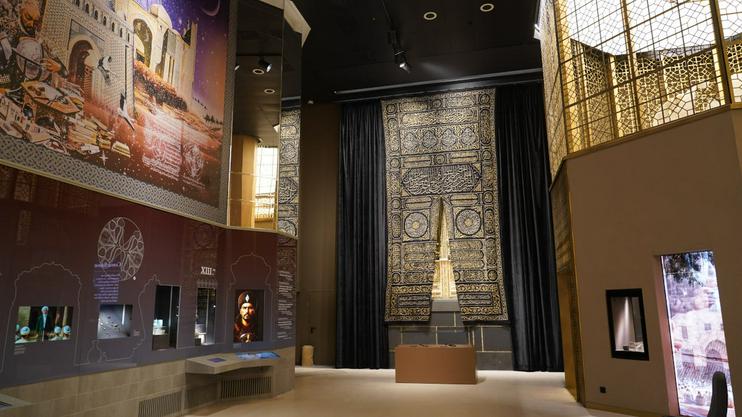 Kiswa at the museum of the Center for Islamic Civilization. Photo: Center for Islamic Civilization press service
Kiswa at the museum of the Center for Islamic Civilization. Photo: Center for Islamic Civilization press service
— The museum also displays other sacred texts, including copies and facsimiles. Does their value diminish when reproduced? Spiritually speaking, of course.
— From a spiritual perspective, or any other, the value cannot decrease. The Prophet conveys in his hadith that for every letter read, a person receives reward (ajr and sawab). It does not specify: “read from the oldest copy,” “from the mash-haf (manuscript),” or “from a printed edition.” Any transmission of knowledge is valid and valuable, and the manuscript tradition is also a form of transmission.
The difference is that a copy created by a calligrapher, aside from its beauty and elegance, may contain noticeable errors. It is well known that early Quranic manuscripts preserved or discovered in various locations contain significant discrepancies. The famous Quran codex E20 (a manuscript from the early period of Islamic written tradition, 7th–8th centuries) — most of which is housed in Saint Petersburg at the Institute of Oriental Manuscripts — clearly shows how later khattats (calligraphers, Quran experts) made corrections to the original text. Therefore, from the perspective of disciplines like tajwid and ulum al-Quran, reading the Quran from modern, reissued, and edited editions is often more accurate. Still, preserving heritage is particularly important for maintaining authenticity.
Discussions about an “authentic Bible” or “authentic Quran” often become contentious: critics of Islam argue that no original copy written personally by Uthman or his contemporaries survives. Yet when we collect artifacts from around the world and display Hijazi scripts, early Kufic manuscripts, mushafs from Kufa, Basra, Baghdad, and other regions, we demonstrate that the Quran has reached us in its modern form as it was recorded during the time of the Prophet Muhammad. Yes, variations in pronunciation and dialect exist — these are well-known, studied, and transmitted both orally and in writing.
We understand that the Quran’s value also lies in being the first written, recorded monument of Muslim culture and civilization. Early Arabs did not widely distribute written works; knowledge was mainly transmitted orally. That the Quran became the foundation of a book culture speaks volumes and carries responsibilities. The Quran later influenced philology and related sciences — linguistics, terminology, rules of meaning, sentence structure, and so on.
In this sense, the Quran is profoundly authentic. Collecting, memorizing, and studying it, observing the development of calligraphy in the early centuries, the stylistic schools — Herat, Shiraz, Isfahan — and how the text was decorated is extremely interesting. Each era sought to impart its understanding of beauty and culture to the pages. Having these mushafs assembled in centers where we can witness a millennium-old tradition firsthand is, of course, remarkable.
— How does the Center for Islamic Civilization combine religion with a museum, which is often considered a rather bustling environment?
— I intentionally use the term “temple of knowledge.” A museum is not a place of bustle; it is a temple. Bustle can be found even around the Kaaba during Hajj or small pilgrimages, where millions of people rush, step on each other’s feet, or, in anger, push — I have seen this often. Bustle can occur anywhere. What matters is that it does not exist in the soul and heart. Contemplating the kiswa and the Quran imparts sakina — tranquility, inner balance, satisfaction, and peace.
For this reason, I do not consider it inappropriate to place such Muslim relics in “temples of knowledge” — universities, madrasas. In Russia, in places of learning and education, we try to include elements from the Quran, its pages: even if a person is bustling, when they gaze at these writings and great relics, they find calm and reflection, reconsider their behavior and lifestyle, and the bustle disappears.
-
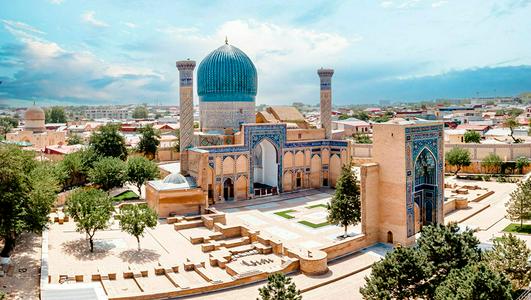 22 October22.10Older Than the Eternal CityWhat has Samarkand accomplished in its three thousand years of existence?
22 October22.10Older Than the Eternal CityWhat has Samarkand accomplished in its three thousand years of existence? -
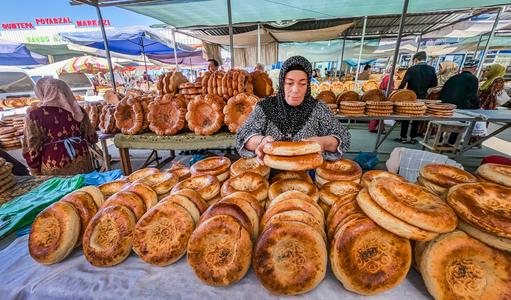 26 September26.09PhotoA Close-Up of the BazaarPhoto Tour of the Fergana Valley with Anzor Bukharsky
26 September26.09PhotoA Close-Up of the BazaarPhoto Tour of the Fergana Valley with Anzor Bukharsky -
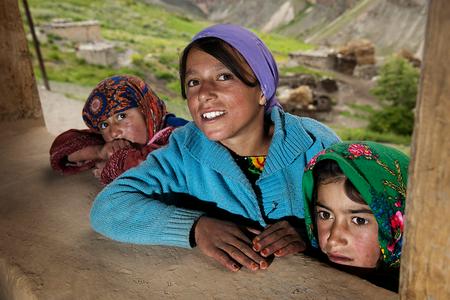 09 August09.08The two deportations of YaghnobDeep in the Tajik mountains live the last bearers of the dying language and culture of the ancient Sogdians
09 August09.08The two deportations of YaghnobDeep in the Tajik mountains live the last bearers of the dying language and culture of the ancient Sogdians -
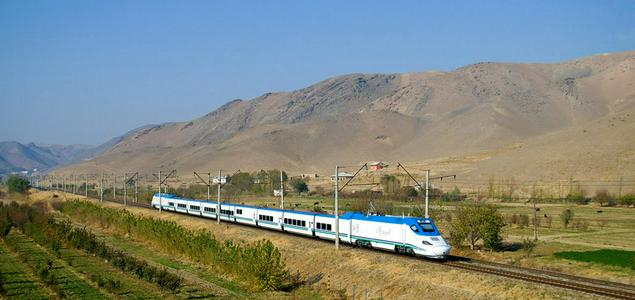 06 December06.12$22,600 to travel the Great Silk Road. By trainUzbekistan’s Tourism Ambassador to the UK on how to develop the industry
06 December06.12$22,600 to travel the Great Silk Road. By trainUzbekistan’s Tourism Ambassador to the UK on how to develop the industry -
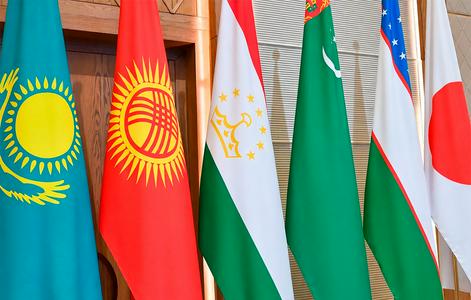 17 December17.12Sake for SixCentral Asia’s Rapprochement with Japan Comes with Hidden Pitfalls
17 December17.12Sake for SixCentral Asia’s Rapprochement with Japan Comes with Hidden Pitfalls -
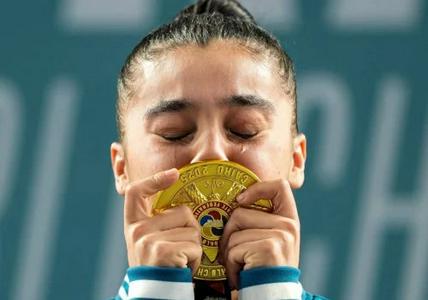 17 December17.12Gulshan Is the BestYoung Uzbek Karateka Becomes World Champion
17 December17.12Gulshan Is the BestYoung Uzbek Karateka Becomes World Champion
